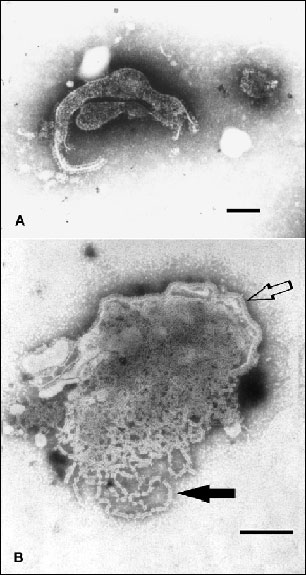Volume 4, Number 2—June 1998
Dispatch
An Apparently New Virus (Family Paramyxoviridae) Infectious for Pigs, Humans, and Fruit Bats
Figure

Figure. Transmission electron micrographs of Menangle virus negatively stained with 2% phosphotungstic acid. A. Depicts the pleomorphic nature of the virion; bar=100nm. B. Shows a disrupted virion, the virus envelope with surface projections (hollow arrow) and nucleocapsids (solid arrow); bar=100nm.
Page created: December 15, 2010
Page updated: December 15, 2010
Page reviewed: December 15, 2010
The conclusions, findings, and opinions expressed by authors contributing to this journal do not necessarily reflect the official position of the U.S. Department of Health and Human Services, the Public Health Service, the Centers for Disease Control and Prevention, or the authors' affiliated institutions. Use of trade names is for identification only and does not imply endorsement by any of the groups named above.